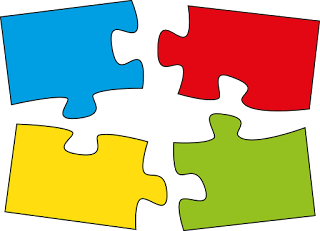A "synthetic Board" can read change sentiment with accuracy and lead change effortlessly.
 The directorship in the modern organization plays a significant role in business advising, strategy oversight, and performance monitoring, etc. Due to the “VUCA” characteristics -Complexity, Uncertainty, Ambiguity, and Velocity of the Digital Era, BoDs should also set tones for changes and digital transformation. An effective board needs to practice synthetic leadership, enables and directs management towards good outcomes, advocate synthetic problem-solving, and ensure the business is on the right track to reach well-defined business goals and maximize its digital potential.
The directorship in the modern organization plays a significant role in business advising, strategy oversight, and performance monitoring, etc. Due to the “VUCA” characteristics -Complexity, Uncertainty, Ambiguity, and Velocity of the Digital Era, BoDs should also set tones for changes and digital transformation. An effective board needs to practice synthetic leadership, enables and directs management towards good outcomes, advocate synthetic problem-solving, and ensure the business is on the right track to reach well-defined business goals and maximize its digital potential.
Mastering synthesis as the decision -making and problem-solving process: Synthesis is natural digital thinking for hyperconnectivity, to put things together to imagine “the art of possible,” and make the combination of components or elements to form a connected whole. Synthesis is an important skill for senior leaders such as board members because it allows them to step back from trivial details and see patterns, generalization, standards, context and capture a bigger picture. More specifically, synthesis is the opposite procedure of analysis to combine separate elements or components in order to form a coherent whole by putting together, combining, and integrating. It is an important thought process for leveraging the multitude of viewpoints to deal with digital paradox today in order to make effective decisions. Because synthesis merges a dichotomy or in other words, the “for” and “against” perspectives, incorporate thesis and antithesis into a higher level of understanding where you synthesize and where both perspectives are incorporated. The corporate board plays a crucial role in leading digital transformation. Perhaps it’s also a good boardroom practice to make Socio-Technical Systems (STS) Analysis which is the change impact model to measure change-readiness against the contexts of goals, people, processes, procedures, infrastructure, technology, and culture.
Synthesizing leadership is more future-oriented, perceives “what could be”: In the industrial age, businesses are considerably static, with the slower speed of changes, therefore, analytical logic is a predominant management style, while analytics describes “what is.” However, with the accelerating speed of changes, digital leaders such as BoDs have to spend more time on pondering the future and perceive “what could be,” under the “VUCA” digital normal. The synthesizing style of leadership would be labeled as such based on the knowledge, insight, skills, capability, actions, and results (the past), the level of understanding via analytics (loose up), synthesis (put together), Systems Thinking (interconnectivity). Synthesizing leaders are good at creating business synergy by blending different pieces of information in such a way that the emergent whole is somehow more than the sum of parts. They are more future-oriented and optimistic, perceive “what could be,” to unlock business performance for the long run.
Digitalization disrupts not only the business boundary but also the industry boundary. Change can flow on the surface whereas digital transformation needs to permeate into business vision, strategy, culture, communication, or process, etc. A "synthetic Board" can read change sentiment with accuracy. If you have good change-readiness, and then, you will probably be better at change. Thus, it’s important to develop the future-oriented “synthetic board” with insightful board directors to share the far-sighted vision, represent the overall quality of leadership, set digital culture tones, make a sound judgment, empower changes, and inspire innovation,











































0 comments:
Post a Comment